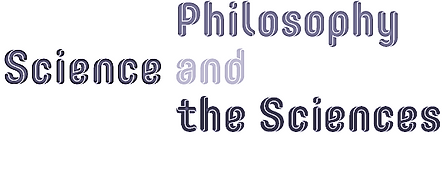
International Conference
Harmonic Theory in Ancient Greece
April 26-27, 2018
Humboldt-Universität zu Berlin
About
Harmonic Theory in Ancient Greece
International Conference, 26-27 April 2018, Berlin
Generously sponsored by the Deutsche Forschungsgemeinschaft (DFG)
Supported by the Research Training Group Philosophy, Science and the Sciences (Humboldt-Universität zu Berlin)
Organized by Sara Panteri (Humboldt-Universität zu Berlin) and
Sinem Derya Kılıç (Humboldt-Universität zu Berlin / Freie Universität Berlin)
Ancient Greek Music can be studied from a twofold perspective: on the one hand, there is the musical practise, the so-called mousiké, which played an important role in the polis; on the other hand, there is the theoretical part, harmoniké, the study of music as a physical quantitative phenomenon, which, as a consequence, could be described using the language of mathematics, in particular, arithmetic.
The aim of this conference is to focus on this second aspect of ancient Greek music. Within this framework, we will take into particular consideration the following fact: the ancient scholars who gave contributions to the field of Harmonics treated it as a scientific discipline and they were often authors of mathematical and philosophical texts as well. Therefore, some of the questions that will be addressed to during this conference are: how could a scientific method be applied to music? How were arithmetical concepts and procedures used in order to describe musical patterns? To what extent did musical experience influence the theoretical description we find in the treatises? Since Harmonics is part of the education of the philosopher, which are the philosophical implications behind particular theoretical musical structures?


"Mathematics, rightly viewed, possesses not only truth but supreme beauty..."
– Bertrand
Russell
Participants

Schedule
Speakers
KEYNOTE:
Andrew Barker (Emeritus Professor of Classics, University of Birmingham)
David Creese (Lecturer in Classics, Head of Classics and Ancient History, Newcastle University, Newcastle upon Tyne)
Andrew Hicks (Associate Professor of Music History and Theory, Cornell University, Ithaca, NY)
Sinem Derya Kılıç (PhD Candidate in Philosophy, Research Training Group "Philosophy, Science and the Sciences," Humboldt-Universität zu Berlin)
Alison Laywine (Associate Professor of Philosophy, Department of Philosophy, McGill University, Montréal)
Stephen Menn (Professor of Philosophy, Department of Philosophy, McGill University, Montréal / Honorary Professor of Philosophy, Humboldt-Universität zu Berlin)
Sara Panteri (PhD Candidate in Classics, Research Training Group "Philosophy, Science and the Sciences," Humboldt-Universität zu Berlin)
Francesco Pelosi (Research Fellow of Philosophy, Scuola Normale Superiore, Pisa)
Federico Maria Petrucci (Junior Research Fellow of Classics and Ancient History, Durham University)
Massimo Raffa (Research Fellow of Classics, Università della Calabria)
Eleonora Rocconi (Associate Professor of Musicology, Università degli Studi di Pavia)
Commentators / Chairs
Nicholas Allan Aubin (PhD Candidate in Philosophy, Humboldt-Universität zu Berlin)
Ian James Campbell (PhD Candidate in Classical Philosophy, Princeton University)
Vincenzo Carlotta (PhD Candidate in History of Ancient Science, Humboldt-Universität zu Berlin)
Sofia di Mambro (PhD Candidate in Classics, Università di Padova)
David Ebrey (Wissenschaftlicher Mitarbeiter, Humboldt-Universität zu Berlin)
Gonzalo Gamarra Jordan (PhD Candidate in Philosophy, Humboldt-Universität zu Berlin)
Juliane Küppers (PhD Candidate in Classics, Humboldt-Universität zu Berlin / Freie Universität Berlin)
Christopher Roser (PhD Candidate in Philosophy, Humboldt-Universität zu Berlin)
Mikhail Silian (PhD Candidate in Classics, Humboldt-Universität zu Berlin)
Tue Søvsø (PhD Candidate in Philosophy, Humboldt-Universität zu Berlin / Freie Universität Berlin)

Andrew Barker (Birmingham):
Enigmatic Arithmetic in the Elementa Harmonica
In two closely related but not identical passages of the Elementa Harmonica, one in Book I and the other in Book II, Aristoxenus introduces us to details of the six divisions of the tetrachord which, he says, are the most familiar. His treatment of them includes, among other things, some sustained bursts of arithmetical calculation, but it is arithmetic of an elementary sort, and though readers may find the passages tedious, they are unlikely to find them mathematically challenging. Nor, on the face of it, do they offer much to feed the appetite of people interested in Aristoxenus’ methodology, or set up juicy conceptual conundrums for people of a philosophical turn of mind. I shall try to show that these impressions are illusory, and that the passages in fact pose several absorbing conceptual and methodological problems. Whether I can do anything about solving them is, of course, another matter.
David Creese (Newcastle):
Superfluous tonoi and Superfluous Authorities in Ptolemy's Harmonics
Ptolemy inherits and modifies the Aristoxenian system of tonoi (‘keys’, roughly) while abandoning some other aspects of Aristoxenus’ methods, adopting a ratio-based approach to comparing the intervals and their positions in the tonoi. This allows him to map musical systêmata directly on to purpose-built instruments (kanones) in a way that will allow their musical and mathematical properties to be appreciated simultaneously. In developing his instruments and instrumental procedures, too, he inherits and modifies what came before him, acknowledging the work of the harmonic theorist Didymus and other unnamed kanonikoi while abandoning their methods or conclusions and redesigning their equipment to meet the requirements of his own more ambitious project.
These two instances show Ptolemy adapting his scientific inheritance in very different ways: the first involves a radical simplification of the system of tonoi, the second a complexification of the monochord kanôn, extending the capacity of canonic division for mathematical and musical rigour. In both directions, Ptolemy goes beyond his authorities: his definition of a systêma is more restrictive than Aristoxenus’; his use of bridges is more sophisticated than Didymus’.
Ptolemy can only propose such modifications because he has first worked out a methodology which is inimical to some of the Aristoxenians’ core premises, and which revises key elements of the Pythagoreans’ arithmetical principles. But his seven tonoi, and his method for establishing their number and interrelationships, preserves much of what he inherits from his predecessors while seeking to strip away its original underpinnings and rearticulate the entire structure in conformity with the premises Ptolemy has worked out. This requires a robust persuasive project: the reader needs to accept simplified Aristoxenian systêmata and elaborated Pythagorean instruments on Ptolemy’s terms. I shall argue that this is only possible once Aristoxenus’ personal authority (along with that of every other named predecessor in the Harmonics) is undermined and replaced with a new kind of scientific authority that rests instead on a specific, privileged interaction between the musically trained ear and mathematical reasoning, and which is facilitated by an ‘apparatus of persuasion’ comprising mathematical proofs, lettered diagrams, instruments and tables (kanonia).
Andrew Hicks (Ithaca, NY):
Did Boethius Make a Mistake in De Institutione Musica 3.14–16?
In an influential 1981 article, “Interpreting an Arithmetical Error in Boethius's De institutione musica (iii.14–16),” André Barbera drew attention to a problematic set of arithmetical proofs. At Ins. mus. 3.14ff. Boethius purports to prove that (1) the minor semitone is larger than three commas but small than four, (2) the major semitone is larger than four commas but smaller than five, and (3) the tone is larger than seven commas but smaller than eight. All of these conclusions are correct, but the mathematical procedure seems inherently flawed, for Boethius manipulates the numerical difference between the terms of a ratio as if it were an accurate quantification of the resultant interval. Barbera maintained that the rationale motivating the erroneous mathematics “lies at the heart of Pythagorean cosmogony.” Boethius (Barbera argued) set out to find the numerical truth underlying acoustic phenomena and “seems to have been satisfied by the apparent numerical verification of what he could hear.” The origin of this “arithmetical error” can be specified with greater precision than the vague invocation of “Pythagorean cosmogony” allows. First, I demonstrate that Boethius's arithmetical error is not nearly as erroneous as Barbera and others would have us believe; rather, it represents an approximate method of calculation used to prove relationships otherwise incalculable. Secondly, I argue that this approximate method was not developed by Boethius but was faithfully translated from his immediate Greek source, Nicomachus of Gerasa's (now lost) Eisagoge musike. Thirdly, I suggest that this method, or at least its basic principle, was not independently developed by Nicomachus either, for similar arithmetical methods arose within the early stages of the Greek commentary tradition on Plato's Timaeus.
Sinem Derya Kılıç (Berlin):
The Doors of Perception: On the Theoretical Senses in Plato's Aesthetics
It is well known that music plays an important role in Plato’s philosophy, and although there are many books and articles on Plato’s philosophy of music, a very important aspect has rather been neglected so far: Which role do the theoretical senses, i.e. seeing and hearing, play in Plato’s philosophy? Although Plato never speaks of the sensory apparatus as being divided into “practical senses” and “theoretical” ones, we clearly find such a distinction among the senses concerning their nobility, with sight and hearing at the top. But how exactly do these senses function within Plato’s epistemology? And, as a primary question: What function does the auditory perception have within it? This will be the focus of my presentation: Plato’s acoustic theory of sound and hearing; what this reveals about his understanding of the senses; and what, in turn, this may contribute to a further understanding of Plato’s aesthetics.
Alison Laywine (Montréal):
Farabi's Effort to Rethink Book Two of Ptolemy's Harmonics
The purpose of this talk is to explore certain aspects of Abû Naṣr Muḥammed al-Fârâbî’s (d.950-951) Kitâb al-mûsîqâ al-kabîr (‘the big book of music’). This work is supposed to have been commissioned by Abû Jaʿfar Muḥammed ibn al-Qâsim al-Karkhî, minister to the Abassid Caliph al-Râḍî who was in power between 934 and 940. Abû Jaʿfar is supposed to have asked Fârâbî to write a book that would explain all of music, as it had been treated by the ‘ancients’ (Greeks). Fârâbî put off the commission until he had had a chance to examine everything on the subject transmitted into Arabic. He apparently hoped he could give his patron a reference to a work already written and in circulation. But he says in a letter to his patron that he found the works he consulted incomplete, either because of deficiencies in translation or because key texts had been lost. This moved him to honour his patron’s request in a quite distinctive way: he says he assumed that the ‘ancients’ had brought music to a state of perfection and so tried to reconstruct the whole discipline from the evidence available to him. But the effort in reconstruction involved a critical engagement with the surviving documents of Ancient Greek music theory and music theory available in Arabic. Fârâbî had access to an Arabic translation (now lost) of Ptolemy’s treatise on Harmonics. The fourth book of the Kitâb presents his direct engagement with Book Two of Ptolemy’s Harmonics. The central issue seems to be how best to understand different kinds of musical structure and changes (modulation) within them: changes of genus of the tetrachord, changes of ‘system’, and changes of ‘tonos’. Fârâbî systematically follows Ptolemy’s order of presentation, but makes substantial revisions as he proceeds. I hope to make sense of these revisions. The task is to figure out how they are supposed to work and what motivates them.
Stephen Menn (Montréal / Berlin):
Euclid's Argument Against Aristoxenus and Archytas' Argument Against Philolaus
Most of the Euclidean Sectio Canonis [SC] is an extended argument against Aristoxenus, notably refuting his claim that a fourth is 2½ tones, and thus that a fifth is 3½ tones and an octave is 6 tones; or, to put it another way, that a leimma is half a tone. The SC is a logical tour de force, not assuming any observations about ratios of strings, but only the general principles that every concord is either multiple or epimoric (and the partial converse that every multiple ratio is concordant) and some facts about musical intervals, and which are concordant or discordant: it deduces (what might well just have been assumed) that the octave, fifth, fourth and tone are the ratios 2:1, 3:2, 4:3 and 9:8, and then goes on to settle the disputes mentioned above. (Until SC 19, nothing even depends on the instrument having strings.) But the argument seems useless against Aristoxenus, who will never admit the premiss that musical intervals are any kind of ratios, much less that concords are multiple or epimoric ratios; and there are other well-known oddities in the logical structure. I propose to make better sense of the SC, and solve these particular problems, by going back to Archytas. Everyone agrees that the physical acoustics of the SC's prologue and at least the arithmetical theorem SC 3 (no epimoric ratio is divisible into equal numerical ratios) are modelled on Archytas, although the SC does not accept Archytas' divisions of the diatonic or enharmonic tetrachord. But I propose that it goes beyond this, that the SC's refutation of Aristoxenus is systematically modelled on Archytas' refutation of Philolaus. This depends on the authenticity of what Huffman calls Philolaus Fragment 6b, which Huffman has denied or heavily doubted but for insufficient reasons. Philolaus 6b makes sense as an attempt to determine the divisions of the chromatic and enharmonic tetrachords, assuming that the chromatic puknon spans a tone and is equally divided, and that the enharmonic puknon spans a leimma and is equally divided. The reason that Philolaus' chromatic and enharmonic divisions are not transmitted is that he never found the numbers for these ratios, which is because it cannot be done, which is precisely what Archytas was proving with SC 3, exactly as the SC uses SC 3 to show that neither a tone 9:8 nor a leimma can be divided into two equal numerical ratios (if the diesis could be divided into two equal numerical ratios, then so could a fourth 4:3). (Archytas would have used his refutations of Philolaus to motivate his own divisions of the tetrachord, which the SC has no interest in.) Philolaus does not believe with Aristoxenus that a fourth is 2½ tones or that a leimma is half a tone, but he does believe with Aristoxenus that a tone can be divided into two equal intervals (refuted in SC 16—the aim cannot be just to show that a leimma is not half a tone, which was already refuted in SC 15), and that the enharmonic puknon is equally divided (refuted SC 18). The SC adapts Archytas' strategy, proving some things that Philolaus would have accepted as well as others that are directed against him, and turns them all against Aristoxenus. The construction of the diatonic scale (SC 19-20) is part of the SC's aims, but so is the construction of enharmonic lichanos and the proof that we cannot construct enharmonic parhypatê by bisecting the interval hypatê-lichanos (SC 17-18); and SC 16 is implicitly making the same point about chromatic lichanos and parhypatê. We can make sense of these structural oddities in the SC by historically "stratifying" the text, not in the sense of suggesting that some parts (e.g. SC 17-18, as often suggested) are later interpolations, but by seeing the whole text as modelled on an older argument with a different target.
Sara Panteri (Berlin):
Some Reflections on Excerpta Neapolitana §19 (416.12-417.11 Jan)
The short collection of harmonic and rhythmical material known as Excerpta Neapolitana takes its designation from the main codex which transmits the text, that is, Codex Neapolitanus III C 2, ff. 41v-45r. The title which appears in the Codex at folium 41v is, indeed, misleading: ΠΤΟΛΕΜΑΙΟΥΜΟΥΣΙΚΑ. Even though some materials might go back to Ptolemy’s Harmonica, other passages remind us of Iamblichus, Nicomachus, Cleonides, and Aristides Quintilianus, just to mention some of them. In my paper, I will focus on § 19, where “the method of finding the tones, semitones and dieseis according to Eratosthenes” is explained. It is worthy to notice that, besides the name of Ptolemy in the title, Eratosthenes is the only theorist mentioned in the Excerpta. Yet, apart from the Excerpta, we have no other references to the attribution of this “method” to Eratosthenes. Furthermore, the peculiarity of the material might lead us to doubt about the authenticity of this reference. During my presentation, I will first pay attention to the way the text of § 19 is transmitted in Codex Neapolitanus III C 2. Secondly, I will focus on the two paragraphs which appear before, since they refer to the division of the tone according to the Aristoxenian tradition. Finally, I will try to contextualize the procedure presented in § 19, taking into consideration both harmonic and arithmetic treatises and the commentary tradition of Plato’s Timaeus.
Francesco Pelosi (Pisa):
When the Slower Catches the Swifter: The Physics of Sound and Sense Perception in Ancient Greek Theories on Consonance
In Tim. 79e-80b, during an extensive treatment of respiration, Plato abruptly introduces a refined account of consonance in music, designed to explain how high-pitched and low-pitched sounds can be perceived as a single object of perception, even though they travel at unequal speeds and, as a consequence, reach the ear at slightly different times. Central to this passage are both the relationship between the pitch and speed of a sound, dominant in ancient Greek acoustics, and the theory of sense perception dealt with at length in the Timaeus. Through a close reading of Tim. 79e-80b and other relevant passages (e.g. Archytas 47 B 1 DK, Arist. De sensu 448a, Thphr. fr. 716 FHS&G), the paper explores the intersection between the physics of sound and theories of sense perception in some ancient views on consonance, in order to show how this particular auditory experience was approached and conceptualised by ancient philosophers as a thought-provoking event, which raised challenging questions about the nature of sound, the sense of time and space, and the psychophysical processes involved in perception.
Federico Maria Petrucci (Durham):
The Epistemological Function of Music in Middle Platonism
In my paper I shall enquire into the efficacy and function of music and harmonics which emerge from Middle Platonist texts. It would be quite natural to regard the Middle Platonists’ approach to music as a matter of pure mathematics. Indeed, this was a fairly important aspect, which they did not fail to emphasise and exploit. But this tells us just a part of the story, and probably a less interesting one. In fact, a closer examination of extant sources – from Plutarch to Theon, from Maximus to Alcinous – will suggest that Middle Platonists conceived both the epistemological function of music and the range of objects which music deals with in quite a complex way: music – and, with it, harmonics – is a multifocal discipline, which is bound to all aspects of intellectual experience, from sense-perception to pure contemplation of cosmic harmony. The Middle Platonists’ challenge, then, was to discover an epistemological model allowing them to make music at the same time a unitary discipline and one able to grasp very different aspects of reality – and the aim of this paper will be to shed light onto the strategies which Middle Platonists applied in order to achieve this goal.
Massimo Raffa (Calabria):
Communicating Harmonics: Ancient Musical Writings as Persuasive Texts
This contribution is meant to shed light on how ancient Greek music theorists structure argumentations and address their readership in order to be understandable, effective and persuasive. On the one hand, some of the most important treatises, e.g. Ptolemy's Harmonics (with Porphyry's Commentary) and what remains of Archytas' and Theophrastus' works, are taken as case studies; on the other hand, the paper deals with some argumentative patterns recurring in harmonics demonstrations, especially with reference to the usage of everyday life experience as evidence supporting acoustics and harmonic theories.
Eleonora Rocconi (Pavia):
The Notion of synthesis in Harmonic Science (and Beyond)
In ancient Greece, harmonics fully acquires the dignity of ‘science’ thanks to Aristoxenus of Tarentum who first gives an account of a rigorous method of analysis of the structures underlying melodies and introduces new ways of conceptualizing and describing musical phenomena. One of the most interesting concepts discussed in his extant writings is the notion of synthesis that he uses to describe any orderly combination of elements (whether they are sounds, intervals or letters, cf. Harm. 27.19-27) into a sequence. This principle, which in his thought governs the way of combining items in patterns, is described by Aristoxenus as a ‘natural’ principle (i.e., inherent in melos or lexis) and lies at the very bottom of his idea of ‘attuned melody’ (melos hermosmenon), the specific object under investigation by his harmonics. The purpose of this paper is to highlight the pivotal significance of this notion within Aristoxenus’ thought and to identify its echoes in later authors, not only within harmonics but also within the realm of rhetoric.
Abstracts


Location
Contact
For any further details or information, please contact the organizers of the conference, Sara Panteri and Sinem Kılıç, at ancient.harmonics@gmail.com.
Generously Sponsored by


